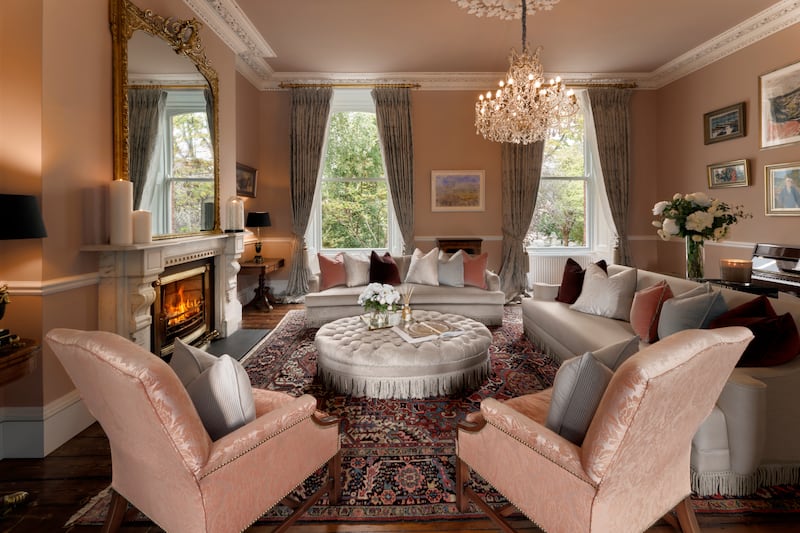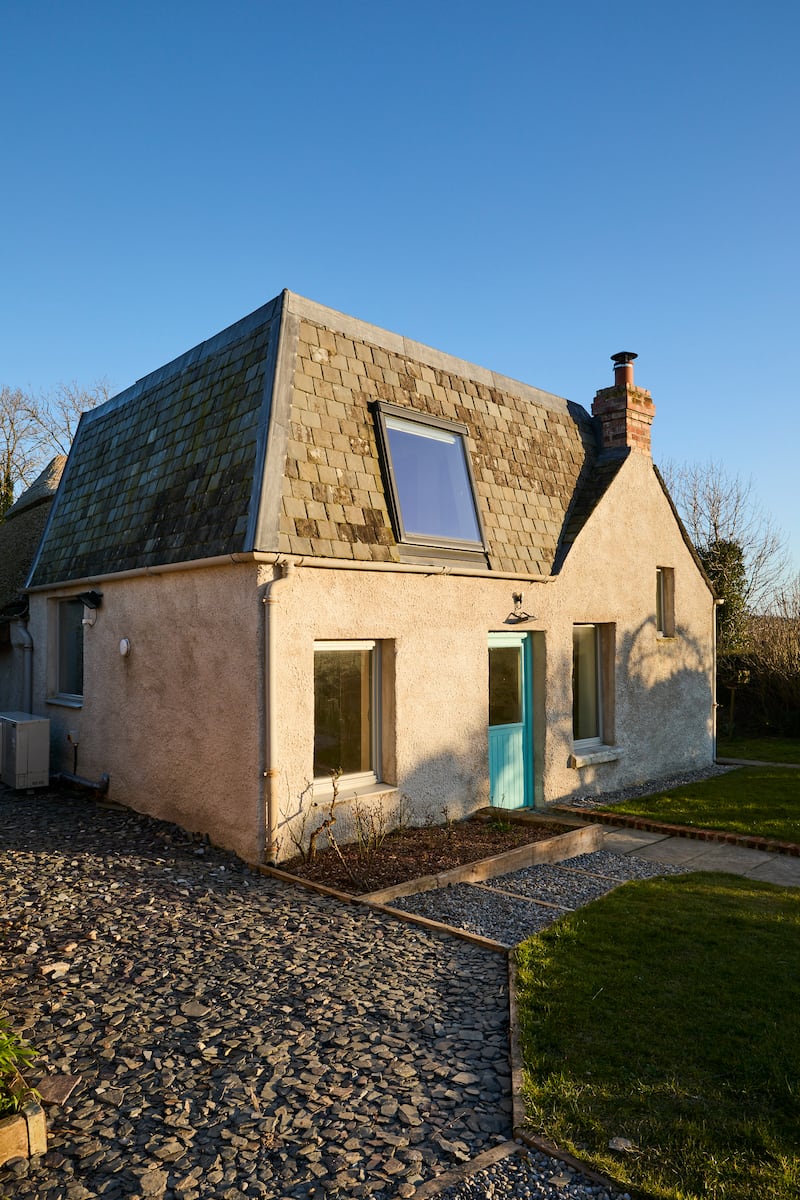For the romantics among us, historic houses hold a seductive draw that new-builds just can’t compete with. There’s a sense of character that can’t be replicated — and don’t get us started on high ceilings, original shutters and elegant sash windows!
But when it comes to period properties in need of restoration, are they money-pits that should only be tackled by brave souls with endless contingency funds?
Or, as some experts believe, could the thousands of historic properties lying empty around Ireland represent viable housing solutions to anyone patient and passionate enough to bring an old property back to life step by step, as they can afford it?
Certainly, restoration projects are a labour of love. This definitely proved to be the case for Aisling Joyce and her (now) fiancé Ruairí McGowan, when they took on the challenge of restoring a 250-year-old house to its former glory.
The couple weres looking for a home in Dublin but couldn’t necessarily afford anything that was ready to walk into, in the right location. So, when they came across a dual-aspect, double-fronted Georgian mid-terrace house with gorgeous character, they decided to take the plunge, even though the property was in need of some serious TLC.
The main draw was its location on Booterstown Avenue, which Joyce describes as a “lovely, established area” with lots of history. “I’m an architect as well,” she says, “so I was always attracted to the idea of a project or a ‘doer-upper’” .
Financing the purchase proved “really, really challenging”, however.
“The banks had no problem with the value ... the problem was the amount of work involved,” she explains.
Finally, their luck turned: they secured financing, got the keys to the house just before Christmas 2019, and in February 2020, Ruairí proposed to Aisling on the front steps.
When they began stripping back rotten plaster, it became clear it would be best to do a “deep renovation” rather than a cosmetic makeover. They decided to move in with McGowan’s parents “temporarily”; shortly after, the country went into lockdown.
The surprises kept coming and very few of them were pleasant: there were rotting timber joists in the basement and about 50 pigeons trapped in the roof space. The house also needed new water connections, new wiring, damp proofing and plastering.
“There are massive risks to buying a period house,” Joyce says. “If we knew then what we know now we might never have done it ... sometimes it’s better getting into it and taking each hurdle as it comes.”
They took the attitude that out of “surprises” come opportunities. When they realised that joists had to be replaced, they used that as a chance to put in underfloor heating.
And the delays caused by lockdowns allowed them to take stock of design opportunities, save up more money and do a lot of the work themselves (with help from Joyce’s father). In September 2021, the “blood, sweat and tears” paid off and they finally moved in.
Joyce says the process of doing up the house with her fiancé forced her to rethink the approach she might otherwise have taken.
“If it was my house, I’d be living in a precious museum-piece never to be touched.”
Her fiancé, on the other hand, is technology-minded and very much focused on living in the future. She jokes that he was her toughest client yet, but they struck a good balance in the end and now have a high-spec home with the beauty of a period house.
“We love what we’ve made,” she says.

Bringing an older home into the 21st century while being respectful of its history and character is a delicate balancing act, and the right décor and even the layout of furnishings can make all the difference.
When Arlene McIntyre of Ventura Design was tasked with breathing new life into two rarely-used adjoining reception rooms in a Victorian home in Ballsbridge, she needed to figure out a way of updating the spaces so that the owners “had to use them”, instead of spending most of their time in the basement.
Although the owner was hesitant, McIntyre moved the daughter’s piano into one of the rooms and it “literally brought new energy into the space”; now when the daughter has her piano lessons, music floods the house.
McIntyre also persuaded the owner to let her put a television on the wall of one the rooms, to make it more useful. They painted the walls a deep period tone so that the TV blended in and wasn’t an eyesore. Now the daughter and her friends use the room all the time.
While this project (which was featured on RTE’s Designed for Life) was a resounding success, McIntyre warns that period properties can be money pits.
“Older properties need deep pockets and a lot of patience,” she says. “You’ve got to be passionate about older properties before investing time and money ... it’s a risk.”
Someone who is definitely passionate about period homes is Patti O’Neill, an architect with a Grade III accreditation in conservation.
In 2013, Patti bought a thatched cottage (part of which dates to the 1790s) near the shores of Lough Derg in Tipperary and spent eight years restoring it step by step, on a small budget.
“I studied as an architect; the training is very much geared towards new builds so in my head I did always think that the highest achievement is to build your own house. But that’s very expensive and I’ve always been a great believer in spending what you have, not what you can borrow.”
She realised she could get the simple labourer’s cottage for a “very good price” and do it up in stages, as and when she had the funds. “I knew I could do it step by step,” she says. “There were tough parts but it was just so satisfying.”

O’Neill is a keen proponent of using natural, breathable materials like clay blocks and lime mortar in old homes like hers. At first glance, natural materials may seem more expensive than the alternatives, but she advises people to bear in mind that natural options often serve multiple functions and create a healthier living environment.
For example, the sheepswool she used in the roof not only insulates the cottage, but also regulates moisture and removes and breaks down toxins.
The respectful way in which O’Neill restored her cottage drew high praise from the judges of Home of the Year when it appeared on the first series of the RTÉ programme in 2015.
However, she realised that the flow of the cottage wasn’t working so she set to work on phase two, redesigning the layout, adding an extension and creating a greater sense of connection to the garden and surrounding landscape, and is now reaping the rewards.
“These houses connect us to nature, whether it’s through the materials, through the doing of the work yourself, through opening up the house to the garden,” says O’Neill. “I feel I’m becoming a healthier person through my home.”
She believes strongly that more people should consider creating their own homes by renovating old buildings on a phased basis.
“If you look at all the buildings that could be fixed up and retrofitted, we would have a surplus [of housing], but there is just so little encouragement and understanding,” she says.
“But it’s turning, I hope.”
Top tips for tackling a restoration project
- Choose a building surveyor who has experience with period properties
- Get a conservation architect on board
- McIntyre advises that it’s very important to check if there are any structural risks before starting any period renovations, or even any decorative work, especially if it’s a listed property
- “It’s really important to try and retain as much of the original character in the rooms as you possibly can,” she says. Always try and keep features like cornicing and mouldings
- Original floors are often finished with an “orangey” stain, she says. If this is the case, it’s best to sand them back and re-stain them
- Check if you are eligible for any grants
- Be prepared to get your hands dirty and tackle some of the work yourself. O’Neill encourages more women to get involved in the physical labour, as she did with her Tipperary cottage, and “not to be just making the tea”.
“We can do a lot,” she says. “Just do it at your own pace and your own strength.”
How to stay cosy in an old stone cottage
Architect Patti O’Neill explains the steps to ensuring you’ll be warm during the colder months:
- Remove all the cement renders, floors and paths from the cottage so it can breathe again and dry out entirely. “A dry house uses less energy to heat than a damp house,” she says
- Use natural insulation in the floors, walls and roof
- Enlarge, and create more, openings towards the south and southwest for passive solar gain heat (this is heat that a building receives passively from the sun)
- If adding an extension, position it on the north side so that it is “hugging” the cold side of the house and heating it up
- A low constant heat source such as underfloor heating “in a breathable floor of limecrete” is ideal in old cottages

















